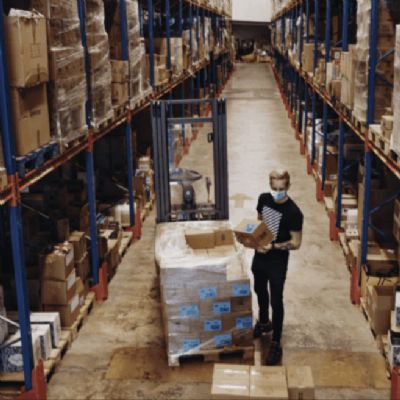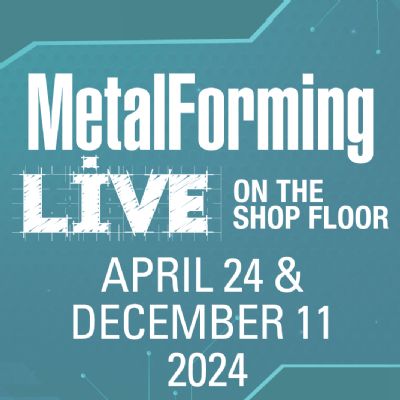
|
| “After years of there being zero metal-extrusion printers,” says Cullen Hilkene, CEO of 3Diligent,“there will be two coming to the commercial market in 2018—machines from Desktop Metal (the Studio System, left) and Markforged (the Metal X, right). These technologies promise new materials and a higher degree of user-friendliness for metal printing.” |
“These systems,” continues Hilkene, “are built on metal injection-molding principles, which allow them a bit more variability in powder characteristics—less-stringent requirements on particle size and shape, for example. This also should help the technology with cost effectiveness because customers can leverage the mature powder supply chain established for metal injection molding (MIM). The cost benefits can be significant, for the right applications. It also opens the door to a few alloys not readily processed by powder bed systems. For example, with powder-bed, we see 316L, 15-5 and 17-4 stainless grades, but not 303 stainless steel. Type 303 is one of a slew of materials not commonly processed by powder-bed systems that can run in extrusion machines. As a general rule of thumb: If a MIM system can process the alloy, there’s a good chance that advanced research is underway to ensure extrusion-style metal-AM machines also can.”
Lastly, their relative user friendliness may open up new venues for metal additive. “Powder-bed and binder jetting machines,” says Hilkene, “require handling of loose powder. Extrusion printers jacket that powder in a polymer, which should open up new environments for running the machines.”
Any Warnings for Companies Jumping Into This Technology?
“Before running out and purchasing an extrusion printer for metal AM, take care to fully understand the process and its tradeoffs relative to alternatives,” Hilkene suggests. “For one, ‘more user friendly’ is not the same thing as ‘user friendly.’ This technology requires a two-step process, including post-print sintering after the initial extrusion. Part-shrinkage rates during sintering can fall in the 20 to 30-percent range, which requires some smart software from the OEMs and a learning curve for operators to accurately predict and account for these changes in dimension to hit critical tolerances.”
Hilkene also warns that surface finish may be another area to ask questions, as post-processing is required of all metal 3D-printing systems, and that may be especially the case for extrusion metal printing.
“Polymer extrusion systems often are knocked for having the most easily visible layer lines of any 3D-printing process. However, finishing of green (unsintered) parts and sintered parts should help this—another element for customers to consider.
“We don’t see these printers as powder-bed killers,” Hilkene continues. “Rather, they represent just one more tool, bringing unique benefits for certain industry applications.”
On the whole, Hilkene views extrusion metal systems as a significant positive for the industry. “While we anticipate the aerospace and medical industries will continue to lean heavily on powder bed for their 3D printed-metal parts,” he says, “extrusion machines also will find uses in those industries. Beyond that, we foresee extrusion metal systems making metal 3D printing more accessible to other industries that may be attracted to some of the material options and relatively low cost, such as industrial products, energy and automotive.”
More Production Stories
Hilkene puts the arrival of metal extrusion printing within the broader context of the industry. “Word is getting out about some of the practical applications for additive,” he says, “and that’s leading to more companies testing the waters. We’re seeing new applications all the time, and not just for prototyping. The industry is pushing for acceptance of the processes for tooling and for the ‘holy grail’ of production.”
Hilkene expects the continued expansion of AM as a production technology. “More announcements will come out regarding metal-AM parts being approved for production use by the Food and Drug Administration and Federal Aviation Administration,” he says. “In turn, news of the success of these parts in the market will start leaking out. There’s no question that metal-AM processes can improve part performance, we just have to find the lowest hanging fruit while AM gradually becomes more affordable. We’ve seen recent examples—Norsk Titanium, for example, early in 2017 received FAA approval to print structural parts for jets. This and other announcements create a comfort level for companies to keep pushing for new applications.”
Speed—Last but Not Least
Hilkene’s final thoughts center on the coming buzz about increased processing speed. “On the polymer side,” he says, “we have heard a lot of headlines about new products launched by HP, Carbon and others. I can say from our experience that there’s a lot of fire to go along with the smoke. We’re seeing 3D printers capable of handling larger quantities cost-effectively due to improvements in speed and overall economics.
“On the metals side,” he continues, “we will see some speed increases with powder-bed systems, but speed probably doesn’t take a big step forward until at least late-2018 or 2019. That’s when we expect to see next-generation binder-jetting technology come into the market, pushing the boundaries of how fast metal printing can occur (at least for certain geometries). In the meantime, speed and productivity increases will for the most part be incremental. Machines with extra energy sources (e.g., lasers) can provide more speed to powder-bed systems, and emerging technologies such as DED can dispense more powder, but metal-additive annual production quantities exceeding 1000 parts will be for a very select subset of parts.” 3DMP
Industry-Related Terms: Alloys,
Bed,
Case,
Center,
CNC,
Corner,
Dimension,
Layer,
Lines,
Run,
Stainless Steel,
SurfaceView Glossary of Metalforming Terms
See also: Desktop Metal, Inc., 3Diligent Corporation, Markforged
Technologies:
 Brad Kuvin
Brad Kuvin








 Event
Event